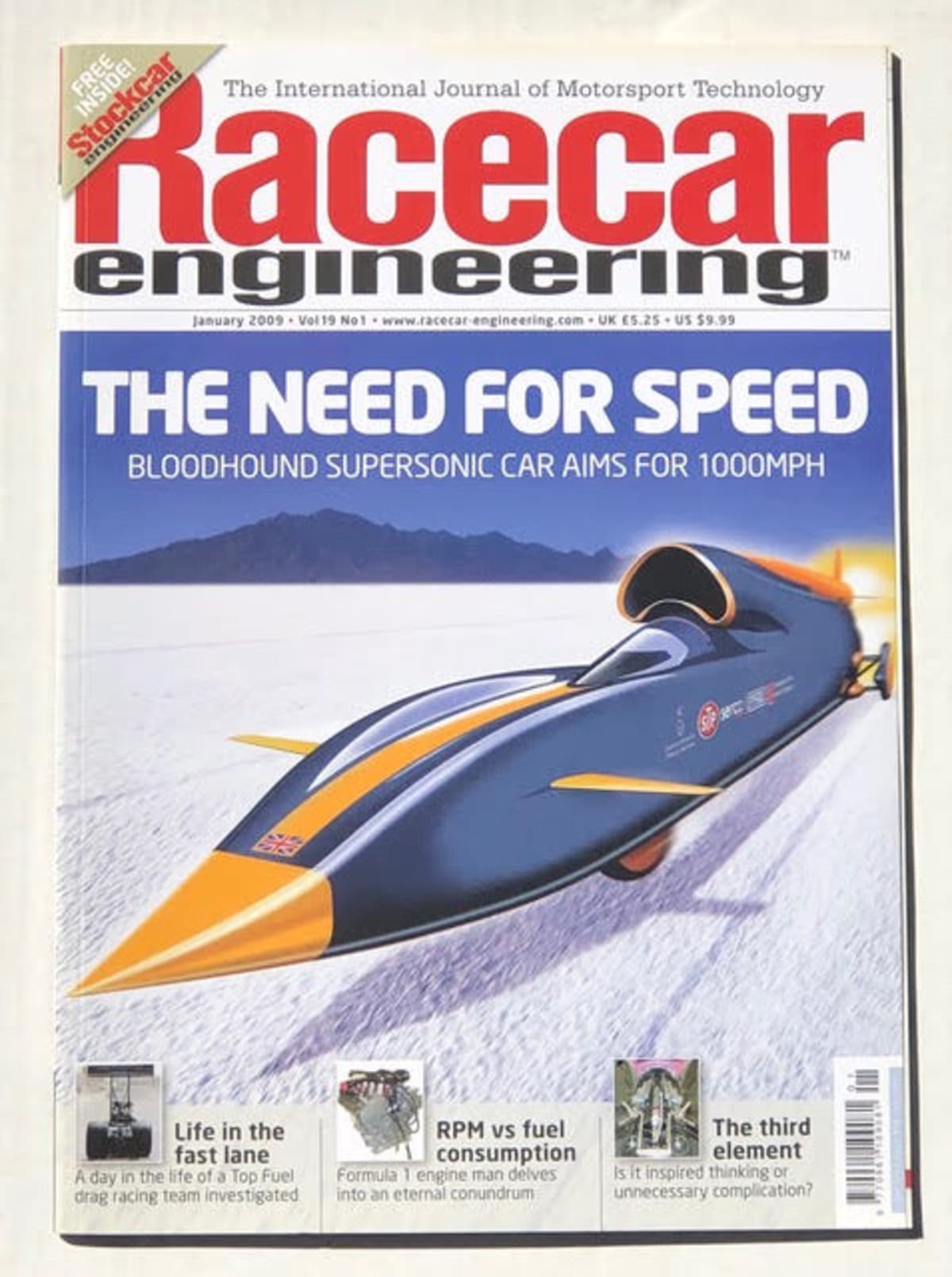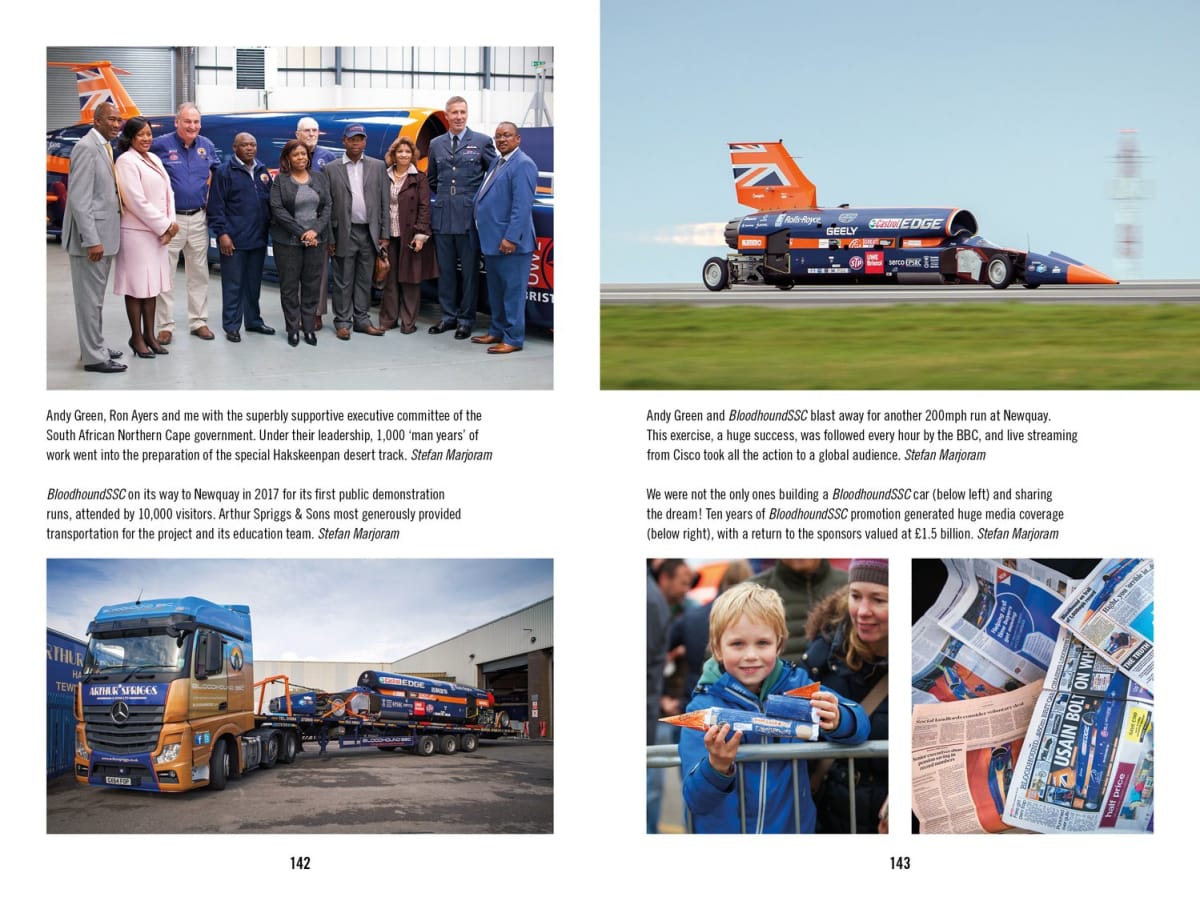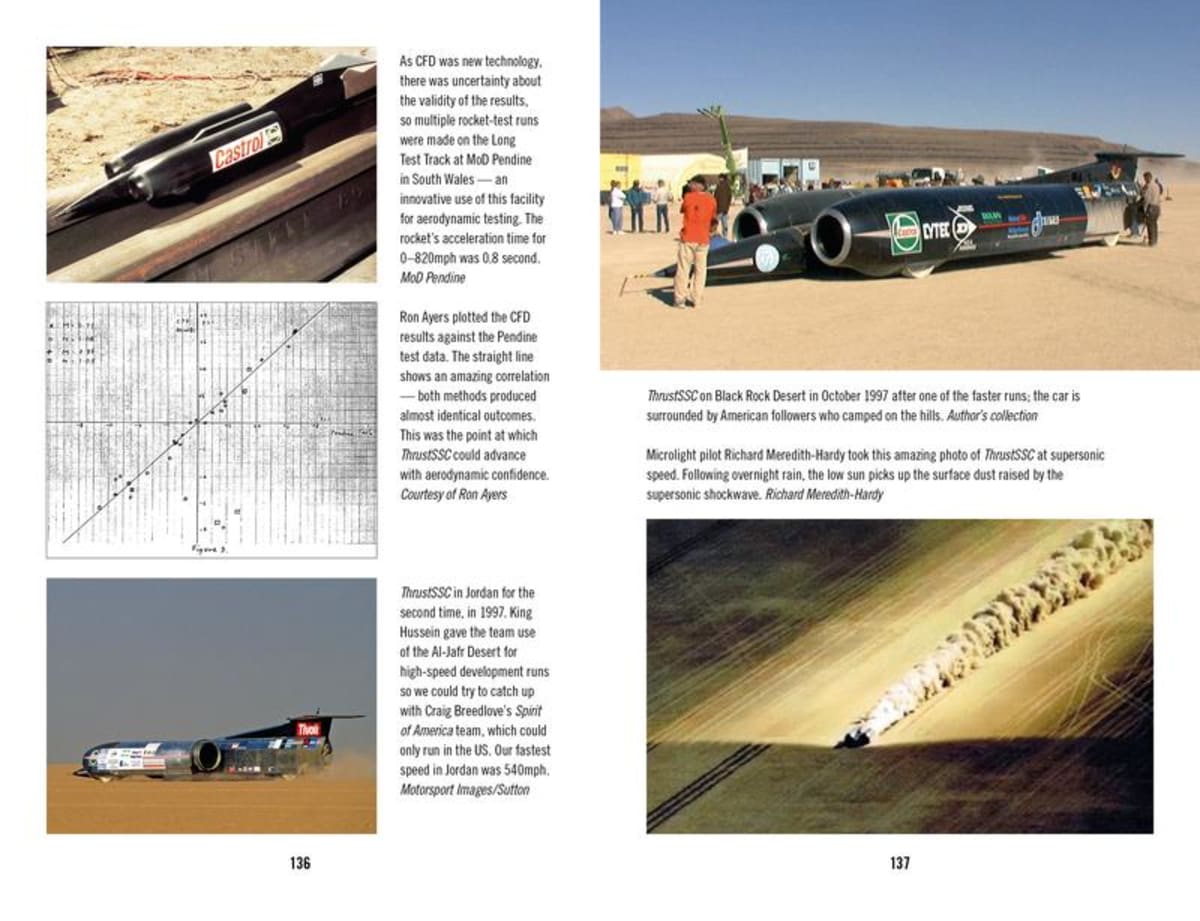Book Review: Take Risk!
Published on Sun, Sep 6, 2020
By: Don Taylor
Take Risk! chronicles the history of the maniacs responsible for land speed records, with focus on the story of the Bloodhound and its quest for 1,000 mph.
Take Risk!
Richard Noble
Evro Publishing, 2020
Hardcover
272 Pages
Published in April 2020
$24.95 US / $25.03 CAN
ISBN 978-1-910505-51-9
____________________________________________________________________

“For my next act I’m going to set myself on fire!” boasted Craig Breedlove while exiting his half-submerged Spirit of America land speed record car which had just plunged onto the pond at the end of the track in Bonneville after its parachutes were torn off. I recall that line from the 1960’s, when daring, outspoken California hot rodders, our boyhood heroes, went for the Land Speed Record (LSR), an era which was initially highlighted by Mickey Thompson’s awesome run of 406 MPH* in 1964 with his homebuilt wheel-driven, piston engine (4 of them!) powered car, Challenger 1.
This led to the epic battle of jet/rocket powered cars like Breedlove’s series of Spirits, Gary Gabelich’s Blue Flame, the Arfon’s Green Monsters, and from the UK, Richard Noble with a car named Thrust2, with these gents swapping the record back and forth.
In the end it was Scotsman Richard Noble who set the land speed record of 633.468 MPH, which stood from 1983 to 1997. This was followed up with his all-new ThrustSSC, driven by RAF Pilot Andy Green, who became the first to break the sound barrier on the ground, and who holds the LSR of 763.035 MPH to this day. All of this was accomplished with an uncertain budget, by a guy with infectious passion, and his small, underpaid crew.

I admit I knew less about Richard Noble’s (noble) accomplishments, but his new book, “Take Risk!” helped me put his speed record setting cars into historic perspective, plus I learned of the funding gymnastics he through to get there. Besides cars the intrepid Mr. Noble also has championed breakthroughs in airplane and boat designs, that are also covered in the book.
As he points out in the Introduction, this is not a book full of details on the technology of his various record setters, nor is it a true biography, except for revealing his childhood dream of being the fastest man on earth, which has defined his life’s work. Instead, as its title implies, this quick-read is really about his amazing ability to sell others on taking the risk to invest in his projects, publicly identifying those who took the risk, and were often rewarded with great payoffs, and those who didn’t.
In retrospect I realize that I have had many touch points in the UK with his promotional campaigns for support of his projects. I was wowed by the sleek, black ThrustSSC on display at Goodwood Festival of Speed years ago, and have since seen the DieselMAX “the world’s fastest diesel”, and the Bloodhound at the Autosport Show more than once in various stages of development, and on UK trade association materials. It seemed that if there was a boat show, carnival, or family picnic in England, Noble would be there, making his pitch, and hawking T-shirts. This was all part of his strategy to make everyone aware of his quests to gain financial, hardware, and services contributions, as well as garner grass roots public support.
The book focuses on the uphill battles he faced in all of his projects to get support, in what he felt was a low risk culture, despite UK politicians and industry leaders claiming to be otherwise. At the same time he understood the need to deliver real value to his backers. For JCB, the massive industrial vehicle manufacturer, the 350.097 MPH record setting Dieselmax, diesel-powered car was a dramatic showing of their in-house designed engine used in many of their products, and something which JCB salesmen could proudly point to for the next decade.
And the Bloodhound, designed to break the 1,000 MPH barrier, was sold in part as a way to get school kids interested in STEM (Science, Technology, Engineering, Mathematics) topics, a sponsorship scheme I have seen before, but nonetheless, effective. In this case, the idea was to feed live data to the students from the various tests of the vehicle, to let them see analysis and problem solving in action.
The UK likes to remind the world of its technology leadership with examples such as the Concord jet, and even the Dyson vacuum. Although UK high volume auto manufacturing has shrunk, they point out automotive leadership in F1, with specialty builders like Lotus, McLaren, and Aston Martin… and in holding the world’s land speed record.

As a good leader would, Noble gives much credit to others on his teams, such as his aero engineer Ron Ayers and driver Andy Greene, each of whom has received professional and government honors as a result, along with the efforts of his many volunteers.
The latest, and hopefully not last, quest for Noble is breaking the 1,000 MPH land speed barrier with the Bloodhound (named after a British surface-to-air, cold war era missile, not his pet). So far he has spent a decade of stops and starts on the project, and has faced bankruptcy.
The book ends with the uncertainty of the Bloodhound project’s future, with its goal not yet attained. But Noble’s story is an inspirational tale of overcoming the odds in pursuing his dreams and well worth reading.
For even more on Richard Noble’s up and down story, you might also pick up his book from 1998, “Thrust – The Remarkable Story of One Man’s Quest For Speed”.
If Take Risk! stirs your curiosity in the broader topic of land speed record history, there are many other fine books out there telling the technology as well as human stories. In particular, I well might recommend Karl Ludvigsen’s two volume set, “Reid Railton – Man of Speed”, also from Evro Publishing. -DT
* Thompson’s speed (406.6*) is always followed by an asterisk, since he failed to make a return run in the allotted time that day, and is thus considered unofficial by the FIA.




